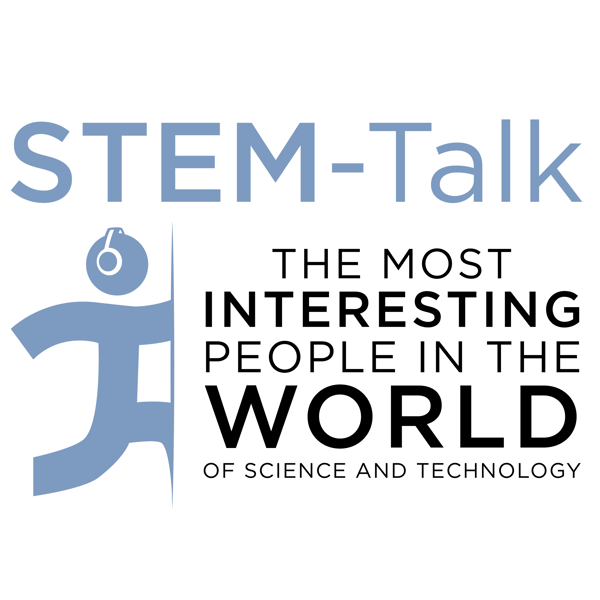Episode 147: Gwen Bryan talks about advances in wearable robotic devices and exoskeletons
STEM-Talk
Dawn Kernagis and Ken Ford
4.6 • 694 Ratings
🗓️ 4 January 2023
⏱️ 40 minutes
🧾️ Download transcript
Summary
Transcript
Click on a timestamp to play from that location
| 0:00.0 | Welcome to STEM Talk. |
| 0:01.1 | Stem Talk. |
| 0:02.0 | Stem Talk. |
| 0:03.0 | Stem Talk. |
| 0:04.0 | Stem Talk. |
| 0:05.0 | Welcome to Stem Talk, where we introduce you to fascinating people who passionately inhabit the scientific and technical frontiers of our society. |
| 0:15.0 | Hi, I'm your host, Don Cornagus, and joining me to introduce today's podcast as a man behind the curtain, Dr. Ken Ford, |
| 0:21.1 | IHMC's director and chairman of the double secret selection committee that selects all the guests |
| 0:25.6 | who appear on STEM talk. |
| 0:26.6 | Hi, Don, great to be here. |
| 0:28.6 | So today we have IHMC's own Dr. Gwen Bryan, whose work focuses on powered exoskeletons, |
| 0:34.6 | and she investigates wearable robotic devices that are aimed |
| 0:38.1 | at augmenting human performance in clinical, occupational, and military applications, |
| 0:43.2 | and intended to maximize exoskeleton benefits through a human-centered research approach. |
| 0:48.1 | The IHMC exoskeleton team that Gwen really leads is uniquely situated to perform this exoskeleton research because |
| 0:56.0 | of the resources and expertise that the team can draw on from both the robotics group |
| 1:01.2 | and the human performance group. And this is relatively unusual. |
| 1:05.2 | Gwen joined IHMC after completing her PhD in the Stanford Biomechatronics Lab. But before |
| 1:10.7 | we get to our interview with Gwen Bryan, |
| 1:12.3 | we have some housekeeping to take care of. |
| 1:14.3 | First, we really appreciate all of you who have subscribed to STEM Talk, |
| 1:17.5 | and we are especially appreciative of all the wonderful five-star reviews. |
... |
Please login to see the full transcript.
Disclaimer: The podcast and artwork embedded on this page are from Dawn Kernagis and Ken Ford, and are the property of its owner and not affiliated with or endorsed by Tapesearch.
Generated transcripts are the property of Dawn Kernagis and Ken Ford and are distributed freely under the Fair Use doctrine. Transcripts generated by Tapesearch are not guaranteed to be accurate.
Copyright © Tapesearch 2025.

